If all had gone according to plan, there would have been a wonderful blog about our visit to South Florida followed by another about our trip to Cuba and then another about a just concluded trip to Southeastern Arizona. Well, all did not go according to plan for any of us. The awful COVID-19 Pandemic has affected all of us, ending some lives and greatly changing all others. Quarantines, self-isolation and social distancing have become the essential norm. Birders may no longer board boats and planes and travel far and wide but we are resourceful and have found safe ways to bird local patches or closer in areas – maybe even a road trip of much more limited scope than in years past. More than anything else, we have also been without the social aspects of birding with friends, casually or intensely.
Now with Spring migration in full swing and my trips where I would have greatly enjoyed it cancelled, I find myself another year older and wondering how many good ones will be ahead. Lost opportunities for sure but then I remind myself of the positives of good health, a loving partner, and decreased but remaining financial resources. So a time to adjust and adapt but with care, still go birding with its many benefits to my emotional, psychic and physical well being. I do not forget COVID-19 for a moment. I travel alone. I wear my mask and my gloves. I use sanitizer frequently. I share moments vicariously. I keep my distance. I accept those limitations and adjustments in response to the powerful enemy of COVID-19…but I have not been completely defeated. The following 19 birds are my reply, my confirmation that there is a way to carry forth – to continue to enjoy something that I love and is essential to my well being.
Bird #1 – American Tree Sparrow
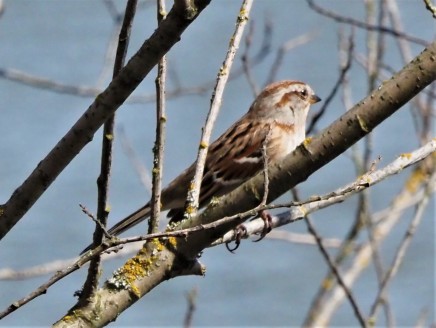
Uncommon in Seattle, Cindy and I saw this sub adult bird at Green Lake – a perfect combination of chasing a good bird, walking the dog and getting out of the house for fresh air and exercise. There were other people there but almost all kept appropriate social distancing and many wore masks and/or gloves.
Originally I was not going to take a long trip during the days of COVID-19 but when I saw that the Dennys were again reporting a Great Gray Owl on a nest (the fifth year it was there), I thought through how I could go for it while maintaining completely safe conditions. I figured if I took my own food, my only contact with people would be at gas stations along the way. If I wore gloves and a mask, maintained distance and used the sanitizer, I felt there was almost no risk. Earlier I had come out against people reporting their birding discoveries and trips as I felt, while safe if done responsibly, they might encourage some not following the same safety measures to undertake unwise and dangerous activities. I have only actually seen a Great Gray Owl in Washington twice and have only one photo. They are incredible creatures. There were lots of other First of Year opportunities for the trip as well. Lots of motivation which was greatly increased when I contacted Mike and MerryLynn and they said they would happily join me – in a separate car and maintaining distance.
Acknowledging my hypocrisy, I compromised by undertaking the trip with the intent of not advertising the trip on Tweeters or Facebook or a blog or even Ebird. Off I went. I got gas at the truck stop at Exit 109 on Highway 90 in Ellensburg and was pleased to see the cashier was behind a Plexiglas screen. A bit down the road I got a photo of one of the many Ospreys I saw in the area. One more early stop was at the Lmuma Creek bridge on Highway 82 between Ellensburg and Yakima. I had seen White Throated Swifts there before and found them there again – a nice FOY.
Bird #2 – Osprey – Ellensburg
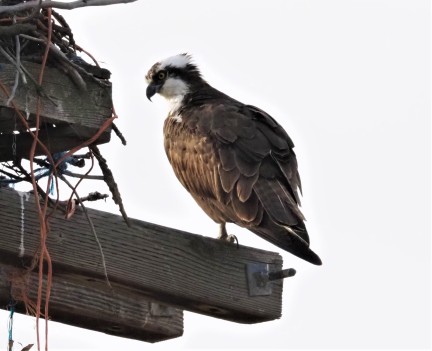
Bird #3 – White Throated Swift – Lmuma Overlook

From Yakima, I headed east and stopped at “Kerry’s Pond” where I hoped to find three more FOY’s: Black Necked Stilts, American Avocets and maybe a Northern Rough Winged Swallow. No Avocet but I found the Stilts and the Swallow.
Bird #4 – Black Necked Stilt – Kerry’s Pond

The plan was to meet Mike and MerryLynn at Dixie, east of Walla Walla, at 1 p.m. This gave me time to drive the Eureka Flats area to look for Swainson’s and Ferruginous Hawks both FOY’s. I made a wrong turn and missed the Ferruginous Hawk nest on Britton Road but was able to find both target species hunting and soaring in the area. A surprise was also finding my first American White Pelicans for the year soaring high above the prairie. I got to the meeting spot a little early and found another new bird for the year, a Lesser Goldfinch in with many Evening Grosbeaks and House Finches at a feeder.
It is always fun and rewarding to spend time with the Dennys, birding or not. They know every bird, plant, rock, animal and road within 50 miles of Walla Walla. Most importantly with the picture as proof, they knew the location of the Great Gray Owl on her nest. Usually they are platform nesters, but this pair liked this hollow in a snag and returned for year number 5. Unfortunately we only heard the male and he never came in to feed her, but no complaints by me. A highlight of any trip. We also heard a couple of Ruffed Grouse and a surprise Pine Grosbeak as we hiked the roads nearby. Three more FOY’s for 2020.
Bird #5 – Great Gray Owl on Nest

There would be one more FOY for the day as we finally saw a Wild Turkey heading back to Walla Walla. I usually see dozens of them in the area and also usually have seen them by now on Hanstad Road on Camano Island, but I had missed them there many times. Only a single one walking up hill away from us, but it was a nice ending to the day.
Bird #6 – Wild Turkey

The original plan had not included an overnight but we had spent a long time in the Blue Mountains and it was getting late. More pertinently I was very tired from a very long day and the drive home was just too long. The motel was clean with the clerk behind a plastic shield and appropriate masks, sanitizer etc, in the lobby. I wiped down everything in my room and felt good about the safety. How sad that we have to think about this all the time now.
The next morning I met up with the Dennys again. We went looking for a Long Billed Curlew at a favored spot but did not find it there or at the next spot, but at Lambdin Road we were successful as we heard its lovely call as soon as we arrived and then found 5 birds in the tall grass. (On my way home I would find another in Grant County.)
Bird #7 – Long Billed Curlew

On the way to find the Curlew, I was in my car behind the Dennys and was pretty sure I saw a Western Kingbird but we could not stop. Ones were found in the area the next day, so who knows. At the Port of Wallula we found both Clark’s and Western Grebes and I had my first Caspian Tern of the year. Viewing conditions in the wind and chop were not ideal but the orange yellow bill of the Clark’s Grebe was evident and visible even in the rather poor photo.
Bird #8 – Clark’s Grebe
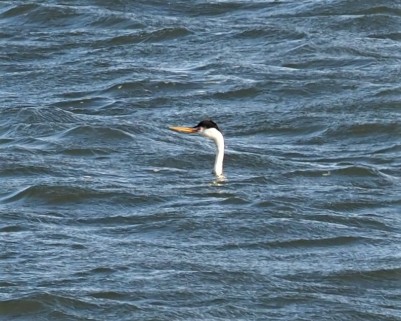
Over the next hour plus we searched for American Avocets and Bank Swallows. We picked out at least six of the latter in a big swarm with many species and then finally found American Avocets at the Tyson Ponds. It was time to say goodbye to Mike and MerryLynn and to head home after a great morning.
Bird #9 – American Avocets

Eared Grebes in breeding plumage had been reported at Chiawana Park in Franklin County. I had never been there and it was sort of on my way home. It is a 127 acre park along the Columbia River. I had no idea where to look and the wind had picked up making it difficult to find birds in the choppy water of the river which is essentially a big lake there. Better lucky than good, I pulled into parking by the boat launch ramp which goes into a small protected cove. Not more than 100 feet off the ramp, this beautiful Eared Grebe begged to have its picture taken. I obliged. Hard to beat this for an easy find and a very nice photo.
Bird #10 – Eared Grebe – Chiawana Park
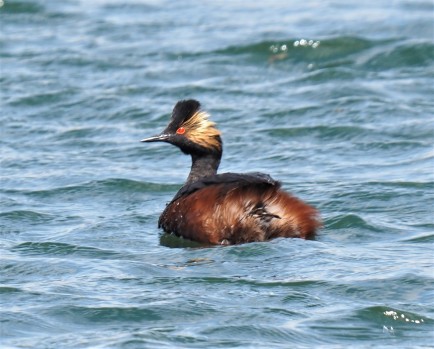
In recent years Para Ponds in Adams County has been the most reliable spot in Washington to find Tricolored Blackbirds. You can also count on many Yellow Headed, Red Winged and Brewer’s Blackbirds there as well in addition to various ducks and shorebirds. When I got there I immediately had a surprise – a Blue Winged Teal – possibly the first reported in Washington in 2020. Lots of raucous Yellow Headed Blackbirds but no Tricolored Blackbirds. Uh-oh…
Bird #11 – Blue Winged Teal – Para Ponds

Fortunately as I drove a bit further east I found a huge flock of blackbirds at the cattle lot and there were at least 3 Tricolored Blackbirds mixed in. Only a quick photo, but it clearly shows the red and white on the wing.
Bird #12 – Tricolored Blackbird – Para Ponds
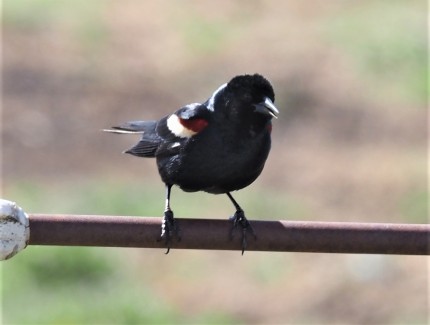
Much further on I stopped at the corral area on Old Vantage Highway and again found Sage Thrasher and Mountain Bluebirds and a FOY Loggerhead Shrike calling from up the trail no visual. And the last stop was at the hummingbird feeders at Hyak on Snoqualmie Pass. There were at least 9 Rufous Hummingbirds there. I am omitting the less than wonderful photos.
The trip east had been a departure from my mostly isolating behavior but had greatly improved my mood – at least a partial return to normalcy even with abnormal precautions. Every day Ebird, emails, texts, and Facebook bring me reports of wonderful birds all around the country and the state as migration brings more and more birds to us. They are unaffected by this virus crisis. They seem to be arriving earlier than ever – maybe proof that they are affected by another man made crisis – Global Warming. In the years ahead there will be many reports and books to read about each crisis and how we have handled them. I am not optimistic.
Each day after my return I read new reports of observations of Northern Bobwhites at the Muck Creek restoration area at Joint Base Lewis McChord (JBLM) in Pierce County. Most were “heard only” but there were some visuals and even a photo. There is some controversy about which Northern Bobwhite populations in Washington are ABA countable. I am not sure whether the JBLM birds are countable or not. What I am sure of is that although I have heard some in years past, I did not have a photo in Washington – one of only a dozen species seen but with no picture. I wanted one, but a complication was that one is supposed to have a permit to visit JBLM. I did not have one and due to COVID-19 the office in charge of them was closed. Since it would not be possible to get “permission”, the only options were to not go or to go and if challenged beg for forgiveness. The Muck Creek area is remote and there is not a need to go through any gates or check points to get there. Nobody I spoke to had ever seen a patrol in the area and there was certainly no worry about virus transmission.
I decided that if the weather was good and I was up early anyhow, I would go. The weather cooperated and as usual I was up early so I gave it a go. The only positive of the virus is that traffic is back to levels not seen since the 1980’s and the highways are wide open. I followed my GPS and promptly got lost. Bruce LaBar came to the rescue responding to my call just after 7:00 a.m. and I was able to retrace steps and get to the right spot, parking at a pull out just past the Creek. As soon as I got out of the car, I head the “bob white” call of the Bobwhite. I headed towards the copse of trees where the bird had been seen in the previous reports and where the call seemed to be located. I quickly got a distant view of literally a “bump on the log”. Was it? Yes. I grabbed a very distant photo and then moved 25 yards closer. Still distant but now a decent picture. Another 25 yards but apparently not with sufficient stealth and the calling Bobwhite took off with what I believe may have been an adoring female following. But I got the photo!!
Bird #13 – Northern Bobwhite – Muck Creek JBLM – State Life Photo #412

One motivation for making this trip was that Solitary Sandpipers were being reported at some ponds in Fife – maybe a consolation prize on the way home if I missed the Bobwhite. I was alone at the ponds as well and found a Solitary Sandpiper with several Greater Yellowlegs at one of the back ponds. It was the first one this year. I also had several Cinnamon Teal and shared these finds real time with Bruce LaBar and Ed Pullen in Tacoma. They were able to get there later and add this species to their Pierce County lists for the year. Glad I could return their earlier kindnesses.
Bird #14 – Solitary Sandpiper – Fife

Good weather continued and spirits buoyed by recent birding, the following day I went to nearby Pine Ridge Park hoping for a photo of something new. No such thing, but I had one of those very special intersections that brighten up any day. I heard the call of a distant Pileated Woodpecker. I tried to lure it in closer with some playback and instantly heard drumming from a second bird very nearby. I went maybe 30 feet up a path into the trees and found it working on a small snag. Spectacular even from afar, up close they are truly magnificent.
Bird #15 – Pileated Woodpecker – Pine Ridge Park, Edmonds

Later that day I got a call from birding friend Jon Houghton. He had discovered a Hermit Thrush in his back yard a few minutes earlier. Figuring this was a chance for a new year bird and to get out in good weather for a walk with Cindy and black lab Chica, we donned masks and went to Jon’s. No show for at least 20 minutes so we said our goodbyes and took Chica to Lynndale Park for her walk. Of course, the Hermit Thrush had returned soon after we left and when so alerted, we returned to Jon’s house and this time the Hermit Thrush cooperated and showed up 5 minutes later.
Bird #16 – Hermit Thrush – Jon Houghton’s Yard, Edmonds

It had been a great week and there would be one more highlight. On April 21st a Calliope Hummingbird was reported by Jeff Bryant coming to flowering trees and plants at his South Seattle home. It returned on the 22nd and I contacted him to see if visitors were ok on the 23rd – with virus cautions in practice. He said sure but the hummer had not been seen that morning. Calliope Hummingbirds are the smallest hummingbirds seen in Washington and are extremely rare in Western Washington. This was only the second one seen in King County in the past 20 years. At only 3 1/4 inches, it is also the smallest hummingbird found in the United States. Oh well, I should have tried the day before. Then Jeff sent me a message that the Calliope had been seen again. An hour later I was at his yard – his very beautiful yard – hopeful. A few minutes later Jeff joined me and we waited together and I learned of the amazing birds he had seen in his yard over the years – 136 species in all. We had a quick visit from the hummer and then it disappeared. A few minutes later with mask in place, Steve Pink arrived on the scene and in another few minutes the Calliope made another visit giving us a great experience as it did its mating display and then posed for photos. An excellent morning.
Bird #17 – Hummingbird – South Seattle
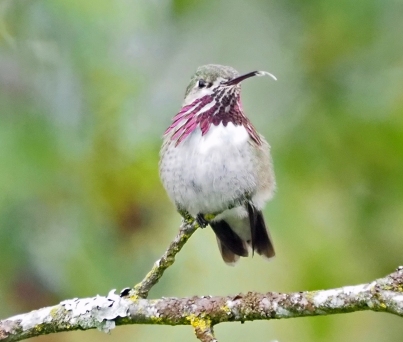
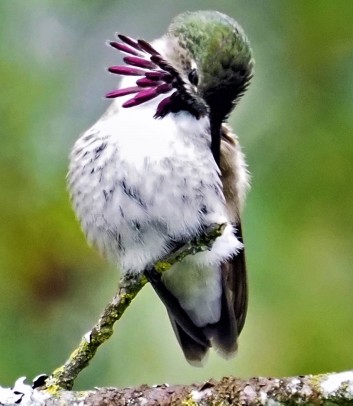
On the way back to Edmonds I stopped at Yost Park hoping that some new migrants may have arrived. Earlier in the week I had heard or seen my first Black Throated Gray and Wilson’s Warblers of the year but had not been able to get any photos. I heard the song of a Black Throated Gray as I started my walk in the park. I tracked him down and got awful photos from below in poor light. Later down along the creek, I heard, then saw and then photographed a Wilson’s Warbler. Later I heard but could not get a clear shot of a FOY Warbling Vireo.
Bird #18 – Wilson’s Warbler, Edmonds

There is nothing special about the last bird on my list. Not a lifer, not a firsts of year, not a new photo but it was a meaningful experience. Coming up the steep trail at Yost Park to return to my car, a small bird flashed in front of me. I had heard a number of Ruby Crowned Kinglets and figured this was another one. Instead it was its close relative – a Golden Crowned Kinglet. It was very active – even for a Kinglet which are notoriously so. I struggled to get a good shot as it moved on every time I got it in my viewfinder. Then finally I got it in the open and I was quick enough to get the photo below.
Bird #19 – Golden Crowned Kinglet
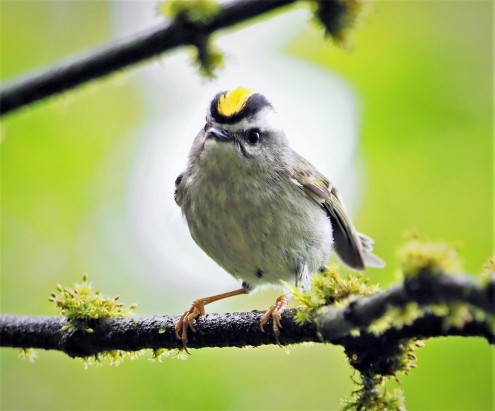
I include it and close with it not because it is more special than any of a number of birds seen and photographed in the past two weeks, but exactly because it is not. It reminded me of just how important it is to me to be with the birds, chasing rarities or new birds for the year or just looking for the next bird and the next photo op. When I am so engaged I completely forget about what the COVID-19 crisis has cost me and what I cannot do and instead remember and appreciate what I can do. The photos above are 19 reminders of that – examples of feeling good and living “large enough” if not living quite as large as before.
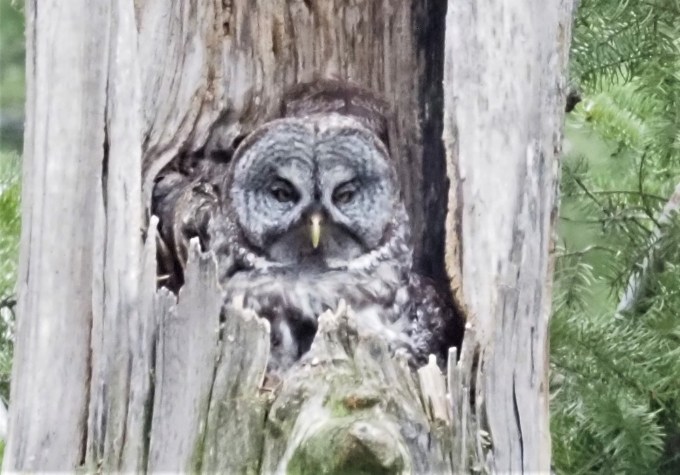
Oh what beauties ……. It seems the lockdown is pretty relaxed in your side. You had some wonderful sightings
I have been enjoying birding from my balcony with lockdown on in full swing out here.
LikeLike
Hi Blair, Glad you got the GGOW, WTSW, and of course AMAV! I enjoyed this as part of my vicarious birding.
I am not sure, but I bet the Bobwhites at JBLM are countable since they have been there for years and are definitely reproducing on their own. In other places (including one I had in my yard a few years ago), they’re probably escapees or planted birds.
Diane Y-Q
LikeLike